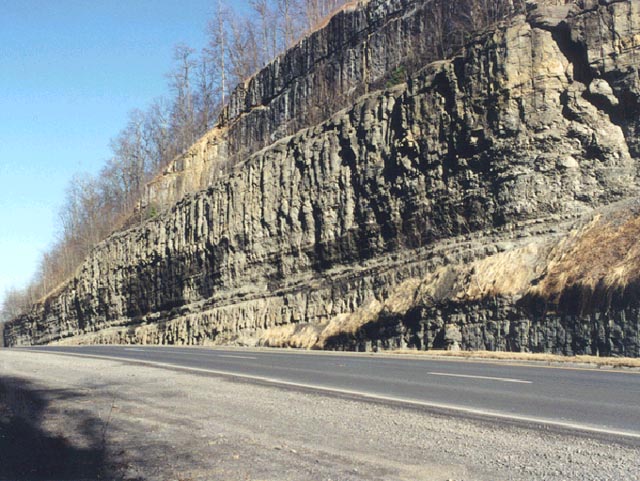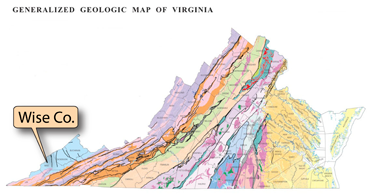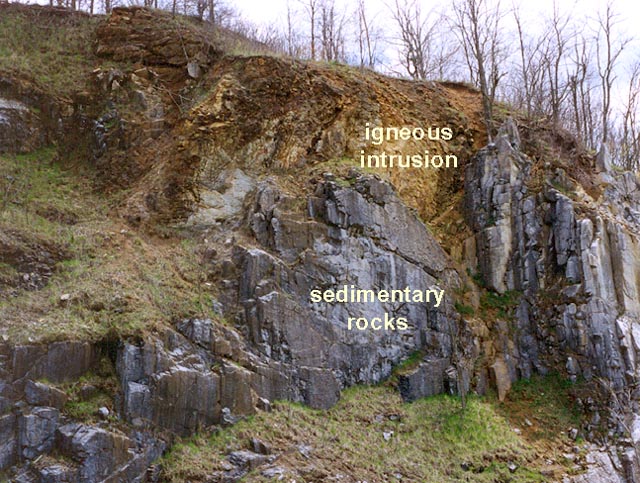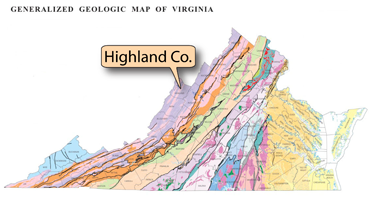
Geologic Time (Part 1)
This section discusses the methods geologists use to determine how old a fossil or rock is. Relative age-dating methods determine when an event happened compared to another event. Absolute age-dating tells how long ago an event occurred. Using these methods, geologists have created a geologic time scale for organizing past times in earth’s history.
Relative Age-Dating
Relative age-dating involves comparing a rock layer or rock structure with other near-by layers or structures. Using the principles of superposition and cross-cutting relationships, and structures such as unconformities, one can determine the order of geological events. Examples are given below.
• Usually, the oldest layers of rock are found at the bottom of a sequence and the youngest layers at the top. This is called the principle of superposition.

Roadcut in Wise County showing the principle of superposition (Photograph by Stan Johnson)
 Flat-lying sedimentary layers from the Appalachian Plateaus province of southwestern Virginia illustrate the principle of superposition. The oldest layers are at the bottom. The youngest layer is at the top.
Flat-lying sedimentary layers from the Appalachian Plateaus province of southwestern Virginia illustrate the principle of superposition. The oldest layers are at the bottom. The youngest layer is at the top.
• If a geologic feature such as a fault or igneous intrusion cuts across other features, the fault or intrusion must be younger than the rock it cuts. These relationships are called cross-cutting relationships.

Highland County igneous rock intrudes sedimentary rock (Photograph by Stan Johnson)
 This light-colored Highland County igneous intrusion cuts through the darker sedimentary rock. Therefore, the sedimentary rock must be older than the intrusion.
This light-colored Highland County igneous intrusion cuts through the darker sedimentary rock. Therefore, the sedimentary rock must be older than the intrusion.